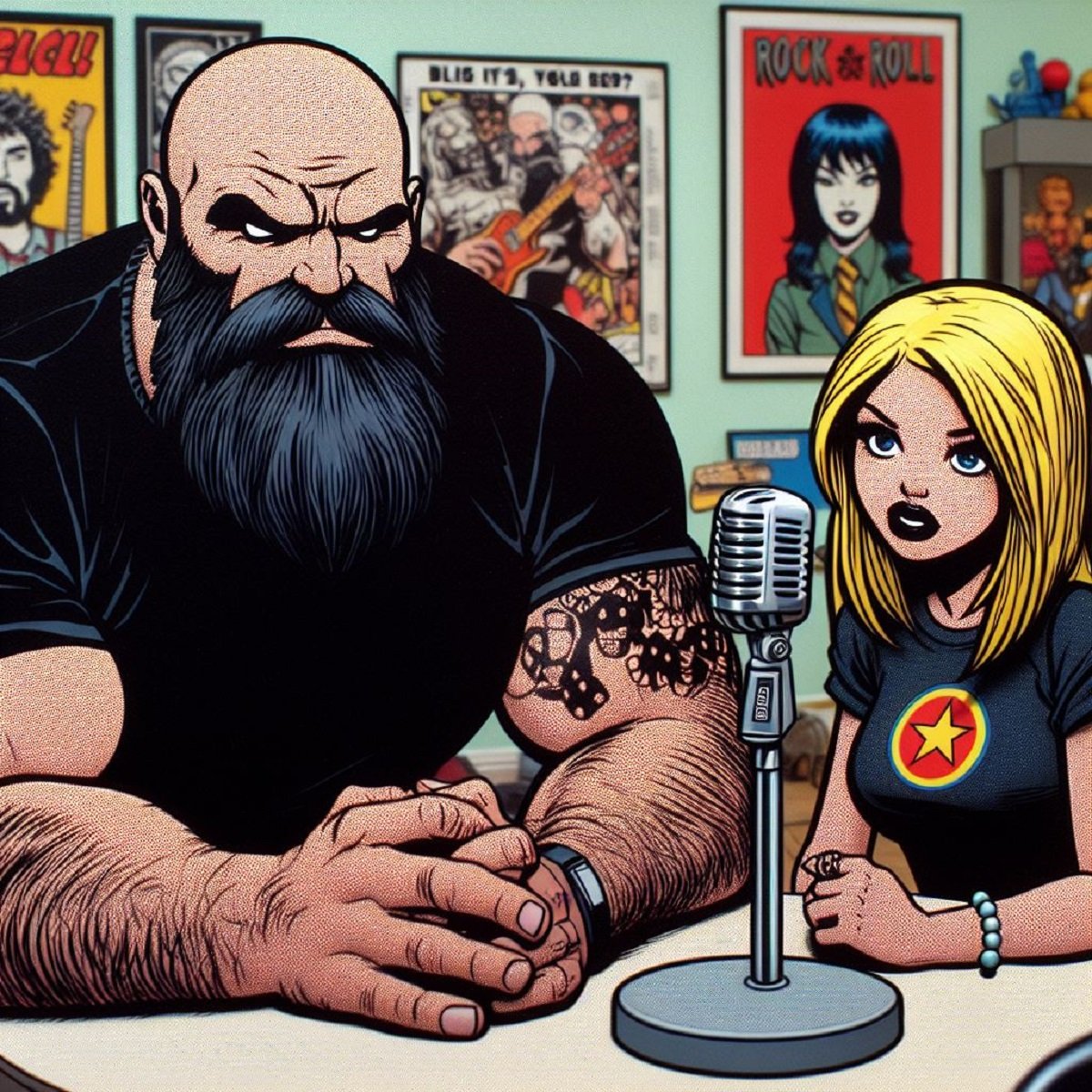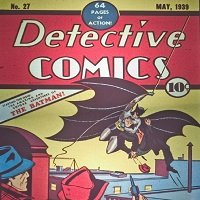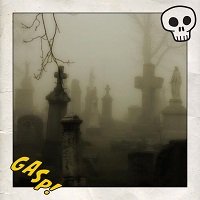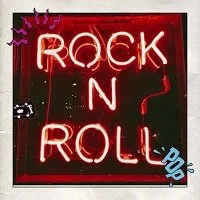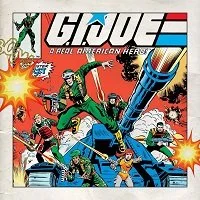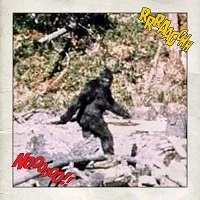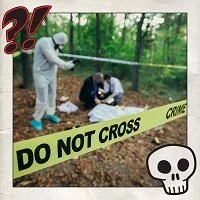This is a podcast series which pro wrestling historian Karl Stern does at both WrestlingObserver.com and here at When It Was Cool where he reads some of the Observer’s Dave Meltzer’s best history pieces and biographies.
From the Pages of the Wrestling Observer Newsletter by Dave Meltzer:
You can listen to this podcast - here.
Corey Maclin (07-30-2013)
Just as this issue was going to press, we got the word that Corey Maclin, a longtime pro wrestling television announcer as well as promoter, passed away on July 30, 2013 in an auto accident at the age of 43.
Maclin’s car rolled over just South of Sardie, MS, on I-55, at about 10:30 p.m. that night according to the Mississippi Highway Patrol.
Maclin had worked in radio, becoming news and program director at WLOK radio in Memphis at the age of 18, where he learned about advertising. He rose to become a sports anchor for the local ABC affiliate, and started appearing as an announcer, working with Dave Brown on Memphis wrestling, starting in around 1995. He also worked with Lance Russell during that period.
After the Jarrett Promotion was told to a Cleveland group, and went out of business in 1997, Maclin remained affiliated with the local wrestling scene as an announcer for Randy Hales’ Power Pro Wrestling.
When that promotion folded after losing its television deal, Maclin, Jerry Lawler and Jimmy Hart formed “Memphis Wrestling: Rhythm & Bruise,” a nostalgia based promotion that used Lawler’s fame, the rich area wrestling nostalgia by running at the Mid South Coliseum in Memphis with low ticket prices. The promotion drew the highest television ratings for any local pro wrestling show in the country, as well as the biggest crowds long past the period where non-WWE wrestling could draw anywhere.
Corey Maclin also owned an ad agency in Memphis.
Maclin himself became a babyface wrestling star with the group, at one point feuding with Lawler when he made a heel turn. The promotion went down in around 2008. Maclin sued WWE over alleged interference in running a major show, when he claimed they knew for weeks he was building and advertising a Jerry Lawler vs. Hulk Hogan match. Vince McMahon then wouldn’t allow Lawler to do the match, which led to a lot of heat with partners Hart and Maclin. Hogan instead wrestled Giant Paul Wight, and while the show did more than 2,000 fans, the expectation was Lawler vs. Hogan would have significantly beaten that number. The show was a major money loser, and left bitter feelings in many circles, which in part led to the demise of the promotion.
Maclin unsuccessfully ran at a Democrat for Shelby County Clerk in 2010.
Maclin had physical possession of a lot of the Memphis tape library from the Jarrett era, and sold his collection to Highspots.com for $20,000, leading to a 20-volume DVD collection. Lawler sued over the deal, since he believed he owned the rights, claiming he bought Jarrett out for $250,000 for Jarrett’s 50% of what had become a money losing promotion in 1997. Lawler and Jarrett each owned 50% of the promotion after Lawler and Lance Russell attempted to break away from Jarrett when business was hot and start their own promotion. Jarrett nixed them breaking away when he gave Lawler half the promotion. Russell, because of his local popularity as an announcer, was kept aboard but Russell and Jarrett were not friends for much of that period, and Russell eventually took a job with World Championship Wrestling for a number of years. In recent years, Jarrett and Russell made up at a Greg Price convention and buried the hatchet, with both expressing mutual admiration of how good the other was in their role.
However, Lawler then sold the company to a Cleveland based consortium for $1 million, which had no idea what it was getting, and went out of business shortly thereafter. Technically the final owners of the promotion was the Cleveland group, and the assets were never purchased in bankruptcy court when the company went out of business.
Maclin was not a good wrestling announcer, but had a certain likeable charm to him personally, coming from the broadcasting and advertising background.
Newton Tattrie (Geto Mongol) (07-19-2013)
Newton Tattrie, a wrestler and promoter best known for his role as Geto Mongol of the famous tag team The Mongols, passed away on July 19, 2013 at his home in Virginia Beach at the age of 82.
The Mongols were one of the hottest tag team acts in the world from 1968 to 1975, a team consisting of Tattrie first with “brother” Bepo (Josip Peruzovic, who became better known as Nikolai Volkoff), and later with Bolo (Bill Eadie, who later became Demolition Ax and Masked Superstar).
Tattrie at one point was the promoter of the Pittsburgh territory, purchasing it from Bruno Sammartino, and then selling it to Pedro Martinez.
Tattrie, of course, wasn’t from Mongolia, but from Springhill, Nova Scotia. He was a journeyman wrestler who had used a number of names, including Mr. Robust when he started with Stu Hart’s Stampede Wrestling, and even The Skunk Man, where he came to the ring with a descented skunk.
One time, The Skunk Man wrestled Terrible Ted, one of Dave McKigney’s wrestling bears. When the bear saw the skunk that Tattrie carried around, he freaked out, got scared and ran into the crowd. The referee had no choice but to count the bear out of the ring, which was, obviously, not the booked finish.
But he became a major star for a few years as Geto Mongol, and everyone, even his family members, for the rest of his life referred to him as Geto.
He had a hard life growing up, running away from home at 12, and then wanted to learn boxing, but wound up in a wrestling gym, breaking in with the likes of “Baron” Mikel Scicluna and Wally Seiber (Waldo Von Erich) in 1954.
But he did little wrestling over the next decade. He was working in the oil fields in Alberta and did some dates with Stu Hart. It was in Calgary that he met Peruzovic, a huge pro wrestling fan who attended the weekly matches. At about 6-foot-4 ½ and 315 pounds, Peruzovic had been an Olympic heavyweight weightlifter from Yugoslavia, who defected in 1967 during a meet in Austria, and wound up somehow living in Calgary.
Tattrie came upon the gimmick while hanging out in of all places, a library in Calgary. He was going through some books, and saw one about Mongols, as well as Genghis Khan and Kubla Khan. So he shaved his head, except for a little ponytail on the tap, as did Peruzovic.
The Mongols started their careers in Northern Manitoba without names. They became Bepo and Geto in Montreal. Peruzovic’s mother used to call him Bepo when he was a baby, which was the word for baby in Croatian. Geto was the word for grandfather, which Peruzovic gave him because he was 16 years older than him. The names are funny because Bepo and Geto were the forerunners of Hawk and Animal, since they were the unstoppable monster tag team of their era. They were doing well in Montreal, and sent pictures of them in their gimmicks with the caveman fur to the New York office.
In those days, Vince McMahon Sr. would introduce wrestlers on television for a few months, so the two would come in for TV tapings while wrestling out of Montreal. They were pushed as two monster brothers who sold nothing. Geto at this point was kind of thick, but he was closer to 5-foot-11. Bepo was very green as a worker, but was an impressive physical specimen in his youth.
The Mongols, managed by Tony Angelo, in their first match in Madison Square Garden, on June 15, 1970, were in the semifinal on the card, winning the International tag team titles (the forerunner of the WWWF tag team titles) from Victor Rivera & Tony Marino underneath the first Bruno Sammartino vs. Crusher Verdu match, which drew a sellout 20,819 fans and set the all-time East Coast gate record with $85,716. Probably the best comparison of the Bepo & Geto combination when they had their WWWF run would be when the Road Warriors first arrived in Georgia. They were all over the wrestling magazines as guys no babyfaces could stop.
Very quickly after, they became Lou Albano’s first tag team champions, although it never counted in his list because they weren’t called the world tag team champions.
The Mongols were second from the top on the July 10, 1970, Madison Square Garden show, beating the giant babyface team of Gorilla Monsoon & Big Bill Miller.
By the August 1, 1970, show they were in the main event, defending their titles against Sammartino & Rivera, the area’s two top babyfaces. Their winning streak ended as they lost via DQ before 17,864 fans.
The tag match was to set up a WWWF title program for Bepo, who headlined twice with Sammartino, both times drawing just over 17,000, while Geto worked with Rivera.
The Mongols were kept strong in tag team matches, going to Madison Square Garden time limit draws with Chief Jay Strongbow & Rivera and Strongbow & Monsoon.
The first time a Mongol lost via pinfall was on February 8, 1971, the night Pedro Morales won the WWWF title from Ivan Koloff, where Sammartino pinned Geto second from the top.
One time during that period, when The Mongols would come to Boston, they would stay with Tattrie’s brother, Howard, who lived there. His nephew, Howard Tattrie Jr., would invite his friends over to hang out. A girl in the neighborhood then wrote a fan letter to Sammartino, telling him that Geto was not really Mongolian, but Canadian. Evidently, Sammartino personally read his fan mail, because he gave the letter to Geto, who gave it to his brother, who then gave it back to Howard Jr., who gave it back to the girl, who was stunned seeing the letter.
The Mongols left the WWWF as champions, and moved to the Pittsburgh promotion, where Geto purchased the promotion from Sammartino and the brothers were the area’s top heels, taking their WWWF International tag team titles to the Pittsburgh circuit. At the time they left, the WWWF brought in Luke Graham & Tarzan Tyler to be their first world tag team champions, managed by Albano.
Tattrie had purchased the promotion from Sammartino for $50,000. Tattrie had never learned to read, because he grew up in the streets, and then became a wrestler. It was only when he became a promoter that he taught himself to read.
The Mongols vs. Sammartino & DeNucci was a headline program in Pittsburgh in 1971. It wasn’t until June 18, 1971, at the Pittsburgh Civic Arena, that the Mongols lost their first match in the Northeast, and their tag team titles, to Sammartino & DeNucci, but they won them back on the next card, on July 2, 1971, in the same city. The Mongols also held the NWF world tag team championships for Pedro Martinez’s promotion in Buffalo and Cleveland at the same time, and did their second major job in August to Luis Martinez & Chief White Owl, losing those belts.
Sammartino owned the local promotion from 1966 to 1971, which ran weekend shows in Pittsburgh and the surrounding area.
Wrestling had a big run in Pittsburgh in the early 60s due to the debut of Studio Wrestling, an era people talk about with fondness as the golden age of wrestling in the market. Toots Mondt was the promoter, and eventually Vincent James McMahon got involved. Sammartino was the top star, and in the early years, drew big crowds, occasionally moving the biggest events to Forbes Field, the home of the Pittsburgh Pirates.
But by the mid-60s, it was suffering. McMahon sold to Sammartino. Sammartino believed they sold it to him, not as promoters would give wrestlers a piece of the action in those days to keep big drawing cards from leaving the area. He believed it was the reverse, that they believed it was a weak business, he would lose money, and he’d have to continue as champion.
“They figured, if Bruno is losing money, he would keep going on (as champion),” he said. “I believed I knew what was going on, though. My father-in-law was a CPA. We checked the books, the dealings. I knew where every dime went. I left instructions. Ace (Freeman) was still working here. He would take orders via the phone. I would contact what talent I wanted, and make the cards.”
Sammartino turned the business around. They would run Pittsburgh every other week at the Civic Arena, as well as cities like Weirton, WV, Wheeling, Altoona, McKeesport and Johnstown.
In 1971, Sammartino got word that program director Sheldon Weaver was leaving, and the new program director, David Chase, hated wrestling. Even though the show drew huge ratings, at one point, when it aired on Saturday nights, it was the highest rated locally produced show in the market, Chase had talked of canceling it. Ratings had fallen with a move to 4:30 p.m. although it still won its time slot.
In what was a huge match at the time, on November 12, 1971, the WWWF world tag team champions, Graham & Tyler, were brought to Pittsburgh for a title vs. title match with The Mongols. Albano had managed both teams, but he ended up siding with Graham & Tyler, turning The Mongols babyface, with Graham & Tyler winning with a low blow finish. On December 18, 1971, after Graham & Tyler had lost the WWWF tag team titles 12 days earlier to Rene Goulet & Karl Gotch, they dropped the International titles to a babyface Geto Mongol and local wrestling star Jumping Johnny DeFazio.
In 1972, when Chase canceled Studio Wrestling on WIIC-TV, Tattrie sold the promotion to Pedro Martinez, who promoted the Buffalo and Cleveland promotion. They continued a show called Studio Wrestling, that was taped in Erie, PA, on the weaker WPGH-TV, until it was replaced in 1974 by the WWWF television show. When they went bust, McMahon Sr., with Sammartino as his top draw, made Pittsburgh a regular monthly stop on the WWWF circuit.
Geto & DeFazio were the last International tag team champions, with the belts being dropped when Geto sold the promotion to Martinez.
Bepo Mongol, with his size, was first recruited to be a heavyweight boxer. When that didn’t work out, he left Pittsburgh, and wound up in the AWA as the giant Russian, Boris Breznikoff. In late 1973, he returned to WWWF television as Nikolai Volkoff, a Russian heel, managed by Fred Blassie, for a major feud with Sammartino. Few fans were aware that the Russian with a full head of hair was the former Bepo Mongol.
When Bepo left, Geto formed a second Mongols tag team with a new brother Bolo, played by rookie Bill Eadie. Eadie, who was teaching high school history in Butler, PA, where Geto owned a gym. Geto figured with his size and power, he could replace Bepo. At around the same time, he also, on the recommendation of Sammartino, trained Larry Whistler, a local high school wrestling standout, who became Larry Zbyszko, and also had a hand in starting out John Minton, a basketball player from Butler, who became famous as Big John Studd.
When Eddie Einhorn tried to promote nationally with the IWA, with Martinez, they wanted to reprise The Mongols as their world tag team champions. Geto & Bolo had already reformed The Mongols in New Japan Pro Wrestling as headliners.
The Mongols era ended with the death of the IWA. After Einhorn got out after massive losses, the IWA ended up as a group run by Johnny Powers, based in the Carolinas. The Mongols remained its world tag team champions until the promotion went down.
The Mongols then went to Jim Crockett Promotions, doing an outsider angle in a heel vs. heel tag team battle against the NWA world tag team champions, Gene & Ole Anderson. Of course the Andersons won that program. Geto was gone from the promotion at that point. Bolo remained in a feud with Wahoo McDaniel, which culminated in a hair vs. hair loser leaves town match, that McDaniel won.
The next week, Boris Malenko brought in his new protege, The Masked Superstar. Most fans had no idea Superstar was Bolo Mongol, because he wore the ring outfit with a shoulder strap to hide his physique, and several other reasons. Bolo Mongol was a punch, kick and power spot wrestler who grunted his interviews. Masked Superstar was a technical wrestling heel, who did a lot of movement and very quickly become one of the best working big men in the business, known for his well-spoken interviews.
Tattrie was out of the wrestling mainstream at that point, although occasionally wrestled until retiring in 1982, at the age of 51. He promoted independent shows in Pittsburgh for years, using only talent he trained, and used to regularly fight with the Pennsylvania State Athletic Commission. He eventually moved to Virginia Beach and was involved in the local 700 Club. Perhaps his greatest accomplishment was being married for 58 years, a marriage that survived moving 43 times.
T-John Tibbideaux (09-17-2013)
Michael Richard, a gimmick wrestler in the late 70s and early 80s, who wrestled as T-John Tibbideaux and Mike the Big Un, passed away on September 17, 2013 at the age of 64. Tibbideaux didn’t do much in wrestling aside from being an attraction, billed at 650 pounds, who would be brought into some territories for a week or two. The idea at the time was he could become a new version of Haystacks Calhoun, as Calhoun’s career was winding down. But times had changed and he really didn’t have much to offer and didn’t last long in wrestling.
I had never heard of him when he was announced for the annual San Francisco Cow Palace Battle Royal in 1979 as the requisite giant. There must have been some kind of issue between Andre the Giant and Shire, or Shire and Vince McMahon Sr., who booked Andre. Andre had been announced for the Battle Royal, as he or Calhoun was in the giant spot almost every year. The San Francisco Battle Royal was one of the bigger houses of the year for U.S. wrestling outside of Madison Square Garden. Then, a few weeks before the Battle Royal, Shire came out and said how he heard from one of the promoters about this huge match in Texas (I think that’s what he said, the location doesn’t really matter since he was making up a story) and said it was a battle of the giants between Andre and a 6-foot-11, 650-pound man named T-John Tibbideaux (sometimes spelled Thibodaux, and he was named after the city in Louisiana).
He talked about how Andre couldn’t budge the guy with his tackles, and how T-John overwhelmed him, splashed him and pinned him in the middle of the ring in just 7:00, and he immediately invited him to the Battle Royal. Since he had told people the guy was 6-foot-11, the guy who was probably 6-foot-6 or so, had to wear enormous lifts in his boots because Ernie Ladd, who everyone knew was 6-foot-9, was in the Battle Royal. Well, they were standing next to each other and T-John was two inches taller than Ladd, and in reality, Andre the Giant when he’d wrestle Ladd, the two were about the same height.
There really wasn’t much to the guy, and after this amazing build up for weeks about him being this new and better version of Andre, he didn’t really get over. He came back in 1980 with a performance probably a little more memorable. He was just billed at 650 pounds but no longer 6-foot-11, and showed up and had shrunk in height. He was maybe an inch taller than Bruiser Brody in that Battle Royal and was a few inches shorter than Ladd. Brody, who stole the show that night along with Gene Kiniski, kicked the hell out of him and he crawled into a corner and started puking.
I don’t remember if that was in the Battle Royal or in a trios match on the same card as they had Brody & Kiniski & Ed Wiskoski losing to Dory Funk Jr. & Terry Funk & Tibbideaux in what was a hell of match actually, because four of the six guys involved were among the best in the world at that time. Tibbideaux was brought back in 1981 for Shire’s final show, the last Battle Royal and was no big deal, just the requisite fat guy in the match. He worked the undercard, teaming with Pat Barrett to lose to Dick Slater & John Tolos. He wrestled until about 1982, as the last time I recall is he was in a multiple-person bodyslam challenge at the Texas Stadium show in 1982 when Fritz Von Erich retired.
If you found this article interesting consider becoming a Patreon supporter. That is how When It Was Cool keeps our website and podcasts online, plus you get lots of bonus content including extra and extended podcasts, articles, digital comics, ebooks, and much more. Check out our Patreon Page to see what's up!
If you don't want to use Patreon but still want to support When It Was Cool then how about a one time $5 PayPal donation? Thank you!
